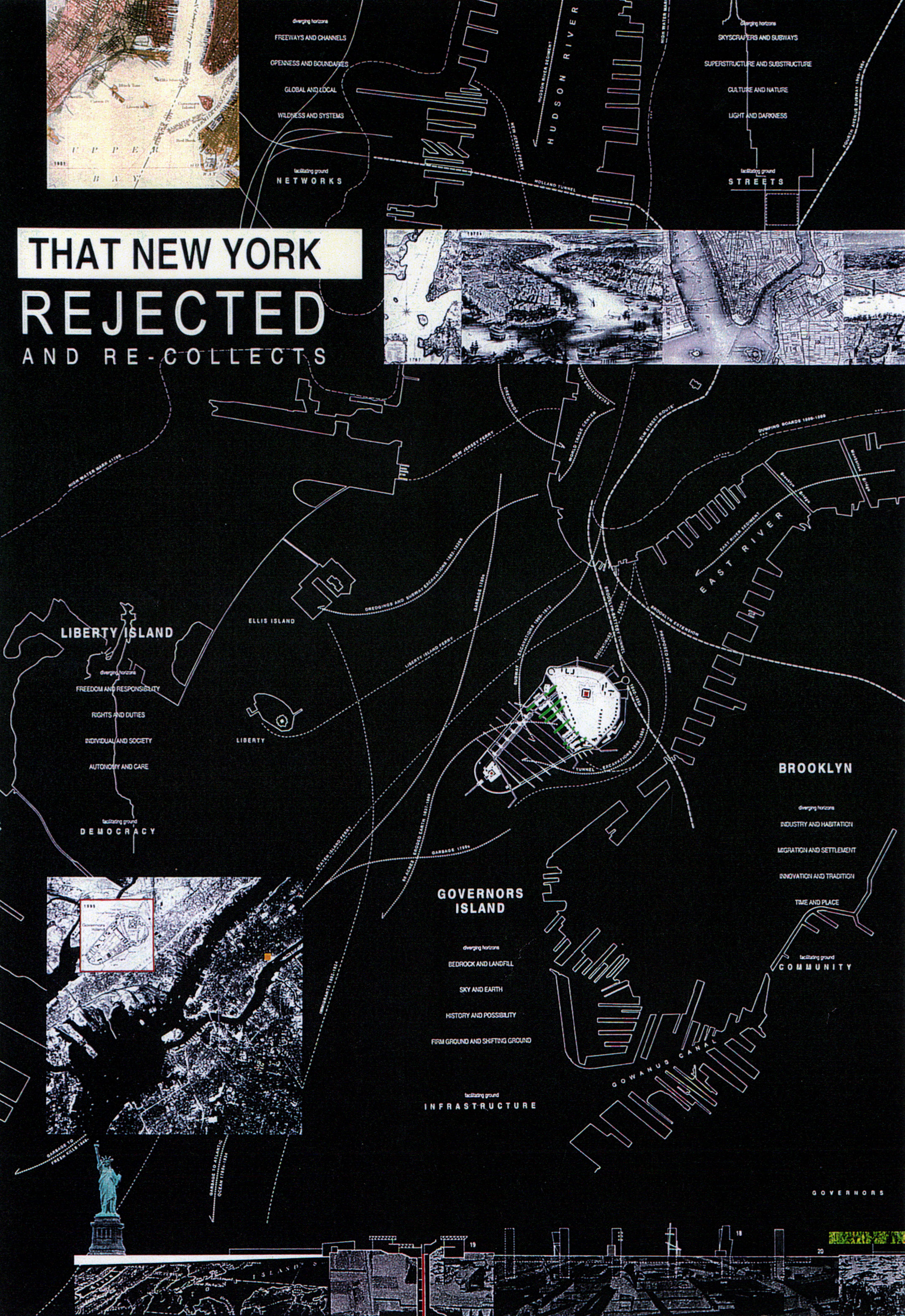SOIL THAT NEW YORK REJECTS/RECOLLECTS
GOVERNORS ISLAND, NY, USA
Soil is constantly lost and made, rejected and collected, in New York City. The waterline bears witness to this fact and has changed considerably over the last century. Land has gradually extended into Hudson Bay. But Governors Island, a cartographer's center of New York's harbor, is more than extended. It is divided—two grounds, two cultures, two territories, two horizons. The north side, a national historic district, is 72 acres of bedrock. Fort Jay (1798), Castle Williams (1811 ), churches, barracks and a number of stately residences, the oldest being the Governor's House (1708), are all located here. The south side of the island is 103 acres of landfill containing material excavated during the construction of the Brooklyn Battery Tunnel (1940-50). It is diverse soil rejected to support constructions of increasingly standardized materials. On this 'lower' side are located a variety of transitional buildings and operational facilities.
Clearly strategic when viewed in maps and aerial photographs, Governors Island has been largely unseen by the public since the United States Army garrisoned it in 1784. The US Coast Guard has occupied it since 1966. The Guard is now moving its operations to other bases, leaving the future of Governors Island to new initiatives.
We enhance the island's divergence, sowing the seed of a dialectic to allow new life to emerge from the soil that New York rejected. On the firm ground of the north, laden with history and sky, we transform the courtyard of Fort Jay into a stage for the performing arts, a platform to the sky, while also extending the northern edge of the island to become a stage on the bay. On the shifting ground of the south open to possibility and earth, we propose a nomadic site. Constructions built on it, however permanent, whether for shelter, storage, parks, exhibitions, sport, industry, will always be provisional. It provides the flux that complements the firmness and fixity of bedrock. On the facilitating ground, way-stations, a promenade, construction docks and a repository will be constructed, making each a part of an infrastructure that maintains the separation of firm and shifting ground.






